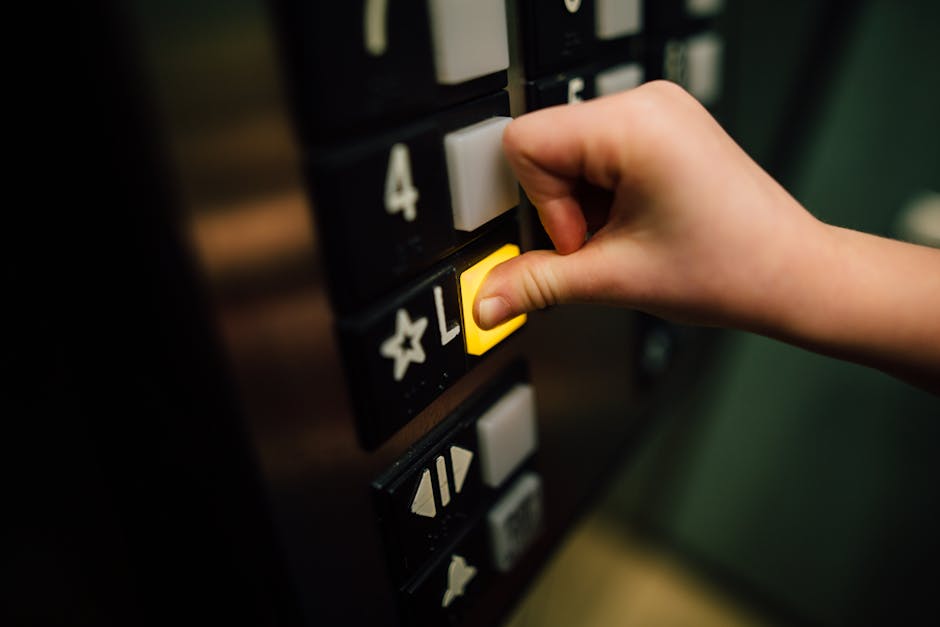Elevator hydraulic systems are the workhorses behind countless commercial, residential, and mixed-use buildings—especially in dense metropolitan regions like New York City, where access, uptime, and safety are non-negotiable. At Kaiser Elevator, we’ve seen firsthand how easily a hydraulic pump leak can escalate from a minor nuisance to a costly, safety-critical emergency. This guide explains the very real risks, the multi-dimensional impacts, and the smart, actionable steps you should take if you suspect or discover a leak.

Risks and Hazards of a Leaking Hydraulic Elevator Pump
1. Immediate Safety and Performance Risks
- Loss of Lifting Capacity & Erratic Movement: When the hydraulic pump leaks, system pressure drops, causing the car to move slowly, stop and restart, or even jolt unexpectedly. For passengers and staff, this leads to discomfort and creates an immediate safety concern—especially with heavy loads or in sensitive applications like hospitals.
- Unexpected Car Drifting: In severe leak conditions, the elevator may slowly descend or drift from its parked floor. This increases the risk of entrapment, code violations, and can trigger emergency stops and shutdowns.
- Fire Hazard: Hydraulic fluid, while generally not considered highly flammable, poses a real risk when pooling in machinery spaces with electrical panels. A neglected leak mixed with dust and heat can contribute to fire conditions if not addressed quickly.
2. Equipment Longevity and Financial Implications
- Accelerated Wear: A leaking pump means lower levels of fluid for both lifting and lubrication. This strains every moving part—valves, shafts, pistons—leading to heat, friction, and eventually, significant mechanical failure.
- Corrosive Contamination: Oil mixed with water (sometimes present in elevator pits or building basements) can rapidly accelerate corrosion on expensive parts, turning a simple seal replacement into a full overhaul. This is particularly relevant for older buildings or those with existing waterproofing challenges.
- Unplanned Outages and Tenant Disruption: Even a moderate leak triggers shut-downs for safety and compliance checks. When you factor in tenant frustration, contract penalties, and inconvenience for guests or staff, even short-term downtime can severely impact building operations and reputation.
3. Environmental and Regulatory Exposure
- Environmental Cleanup Liability: If hydraulic oil seeps into the elevator pit or mixing sumps, remediation is expensive and must follow strict EPA waste disposal standards. Ignored contamination can lead to substantial fines and legal issues for building owners.
- Code Compliance Violations: Leaks directly impact your ability to pass safety inspections and maintain your Certificate of Occupancy. For commercial, healthcare, or hospitality buildings, this can mean delayed occupancy, revoked permits, or higher insurance premiums.
Recognizing the Signs: Is There a Leak?
- Puddles and Oil Stains in the Pit: The most visible sign is fluid around the pump, reservoir, or cylinder area. Even minor puddling shouldn’t be ignored.
- Unexplained Loss of Oil: Needing to top up hydraulic fluid frequently indicates a hidden system breach. This is an early warning for an internal or external leak.
- Unusual Noises: Air can enter the system as oil escapes, leading to hiss, whine, or rattling from the pump—an unmistakable indicator of system distress.
- Slow or Unstable Movement: Performance issues (sluggish operation, lurching, hesitation between floors) should prompt a system inspection.
- Overheating or Odor: If the pump feels hot or there is a burned-oil smell in the machine room, oil level or contamination might be to blame.
- Elevator Car Drifting: A classic sign that the system can’t maintain pressure, often pointing to either a pump or cylinder leak.
For more advice on catching oil leaks early, see our in-depth blog: How to Prevent and Detect Hydraulic Elevator Oil Leaks in Commercial Properties.

What To Do if You Suspect or Spot a Leak: Step-by-Step Solutions
- Restrict Elevator Access Promptly: Safety comes first. If you notice suspicious puddles, odors, or operational abnormalities, limit elevator use and notify affected tenants or staff.
- Call a Qualified Elevator Service Team: Specialized technicians are required for diagnosis and code-compliant repairs. For commercial elevators in NYC, our response time at Kaiser Elevator averages under 1 hour.
- Document and Contain: Photograph the affected area. Use absorbent pads (never sweep oil into a drain), and clearly mark problem spots to expedite repairs and insurance claims if needed.
- Professional Assessment:
- Technicians will test system pressure and inspect hydraulic lines, valves, seals, and the main pump assembly.
- Common failure points include: aging seals (especially on the pump shaft), corroded or cracked pipes, and worn-out fittings.
- Repairs or Replacement:
- Minor leaks are often addressed by replacing a single seal, tightening lines, or swapping a worn fitting.
- More extensive leaks, particularly with pump overheating or significant pressure loss, may require full pump overhaul or swap-out.
- Hydraulic Fluid Handling: All compromised or contaminated oil needs to be removed and disposed of per EPA regulations before refilling with fresh, specification-compliant fluid.
- Thorough System Testing: Once repairs are made, the system should be fully pressure-tested, lubricated, and run through operational and safety cycles before returning to use.
- Record and Plan Ahead: Document all repairs for compliance, insurance, and warranty purposes. Arrange for enhanced preventive maintenance going forward.
For more details on elevator servicing, see our process at Elevator Service at Kaiser Elevator.
How to Prevent Hydraulic Elevator Pump Leaks from Disrupting Your Operations
- Monthly Preventive Maintenance: Regular visual, mechanical, and safety inspections are your best defense. This allows us to catch early warning signs—slight drops in fluid levels, soft seals, minor performance oddities—before downtime and major repairs are needed.
- Modernization and System Upgrades: If your elevator is showing its age, consider an upgrade that includes new hydraulic pumps, seals, and energy-efficient controls. Modern systems are designed to minimize risk and simplify ongoing maintenance. (See our elevator modernization expertise for tailored guidance.)
- Install Pit Leak Detection: For high-traffic elevators or properties with water intrusion risk, advanced sensor systems can provide early alerts before fluid becomes a fire, environmental, or compliance issue.
- Team Education: Well-trained building staff, facility managers, and maintenance crews are critical. Equip your team to recognize subtle leak warning signs and report changes quickly—speed is your ally.
Lifelong Asset Value: The Kaiser Elevator Advantage
- End-to-End Vertical Transportation Solutions: From new system engineering to 24/7 emergency repair, all our services comply with the latest codes and are designed to reduce total cost and schedule risk.
- Faster Response, Fewer Headaches: Our NYC-based team provides rapid diagnostics (average response under 1 hour), full documentation, and long-term preventive solutions for property managers, developers, and owners.
- Long-Term Cost Control: Through proactive maintenance and modernization options, you avoid the unpredictability and escalation of behind-the-scenes leaks.
Next Steps: Protect Your Riders, Asset, and Reputation
If you’re concerned about a hydraulic elevator leak, waiting increases your risk—both financially and operationally. A small leak can become a major emergency if ignored. For peace of mind, get in touch for a fast, code-compliant evaluation.
Ready for a no-obligation consult or urgent service call? Contact Kaiser Elevator or call us at +1 (888) 274 6025. Protect your passengers, your building, and your bottom line with expert service trusted across New York and beyond.
For related resources, see also: How to Prevent and Detect Hydraulic Elevator Oil Leaks in Commercial Properties and Elevator Maintenance Contracts: What Every Building Owner Should Know to Minimize Downtime and Cost.

